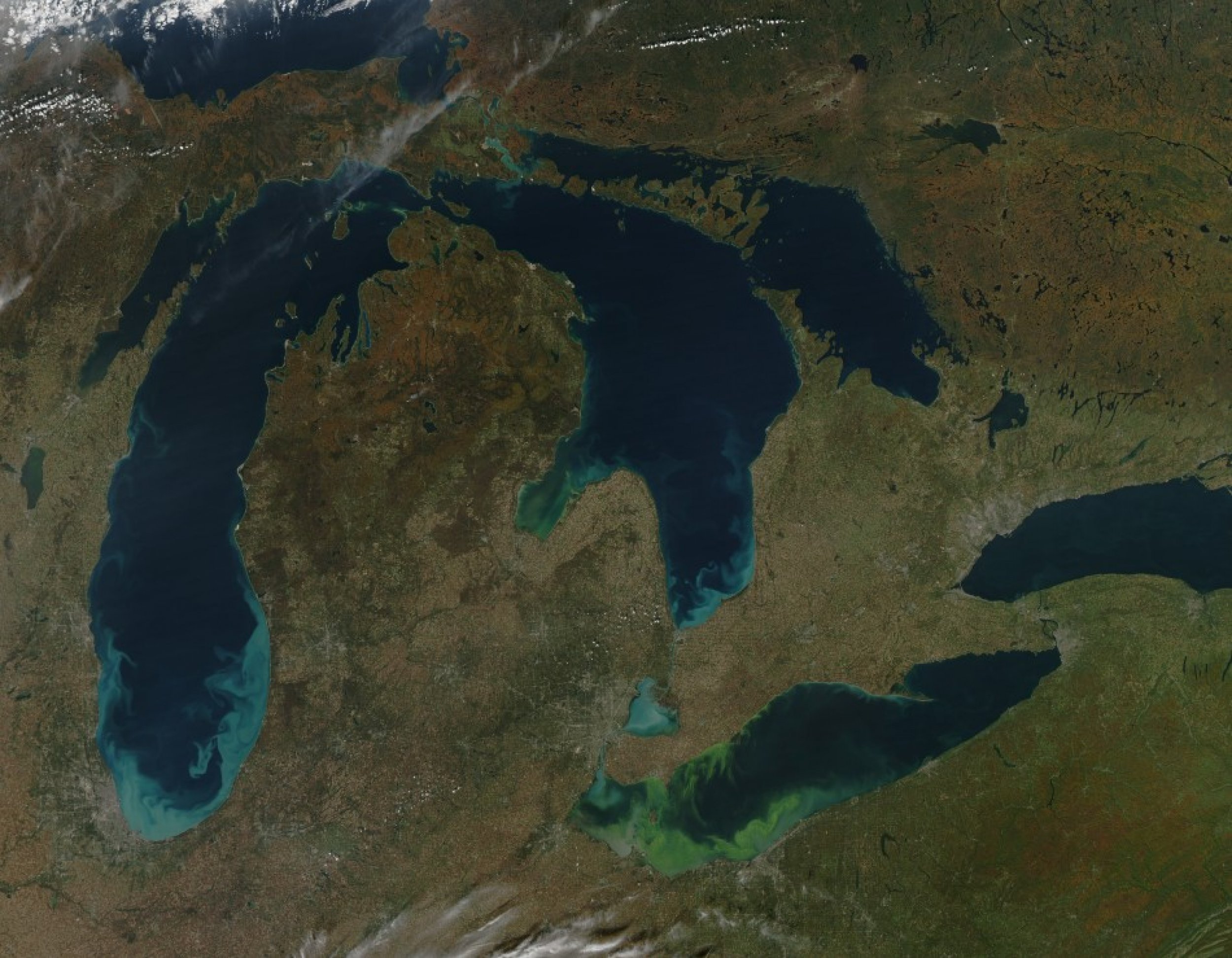Lake Erie Algae Bloom Regarded as Worst in Decades; NASA Reveals Disturbing Pictures
A massive algae bloom on the waters of Lake Erie in the U.S. is believed to pose a significant threat to aquatic life forms in the lake. The algae, which is toxic, is sucking the oxygen out of the water. According to reports, this is the worst bloom since the early 1960s. Scientists have also revealed that the bloom is caused, primarily, by the phosphorous from agricultural waste that is washed into rivers.
According to NASA Earth Observatory, such blooms were common in the lake's shallow western basin in the 1950s and 60s. Phosphorus from farms, sewage, and industry fertilized the waters so that huge algae blooms developed year after year.
However, the condition improved in the 1970s when regulations were imposed on agricultural and sewage treatment procedures to limit the amount of phosphorus released. However, this year, a giant bloom has spread across the western basin once again. The particular reasons for the bloom are complex but may be related to a rainy spring and invasive mussels.
The Huffington Post reported that although algae does not kill the aquatic life forms directly, bacteria present in the water use up oxygen to break down the algae after it dies. This creates areas where fish can't survive. In addition, if consumed, it can also create flu-like symptoms in people or even kill smaller animals.
A report by the U.S. Environmental Protection Agency mentions that Lake Erie is exposed to the greatest effects from urbanization and agriculture. In fact, it was the first Great Lake to show evidence of lake-wide eutrophic imbalance with massive algal blooms and depletion of oxygen.
The Lake Erie bloom is mainly Microcystis Aeruginosa, an algae that is toxic to mammals, according to the Great Lakes Environmental Research Laboratory.
Several days of calm winds and warm temperatures allowed the algae to gather on the surface. The bloom intensified after Oct. 5 and by Oct. 9, when the Moderate Resolution Imaging Spectroradiometer (MODIS) on the Aqua satellite acquired the lower image, the bloom had covered much of the western basin.
Take a look at exclusive NASA images of the bloom below.


© Copyright IBTimes 2024. All rights reserved.





















